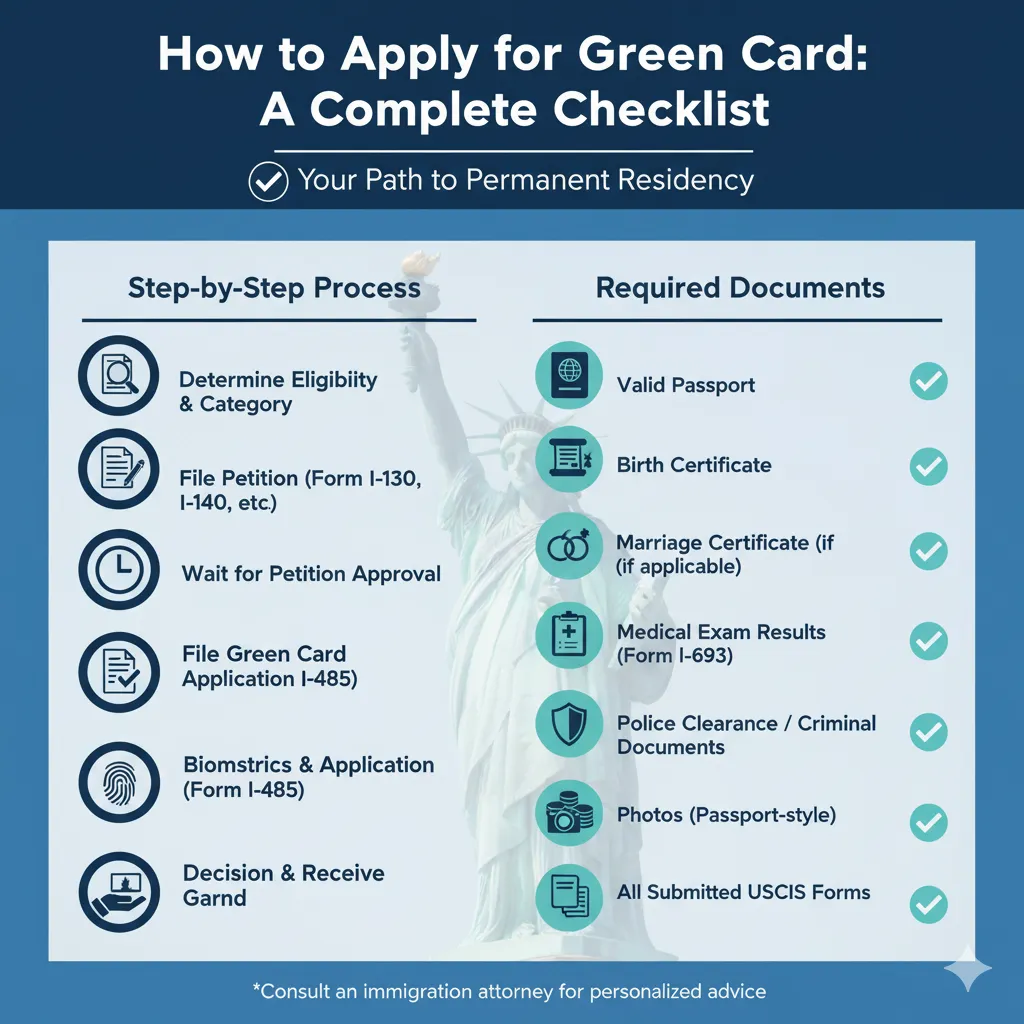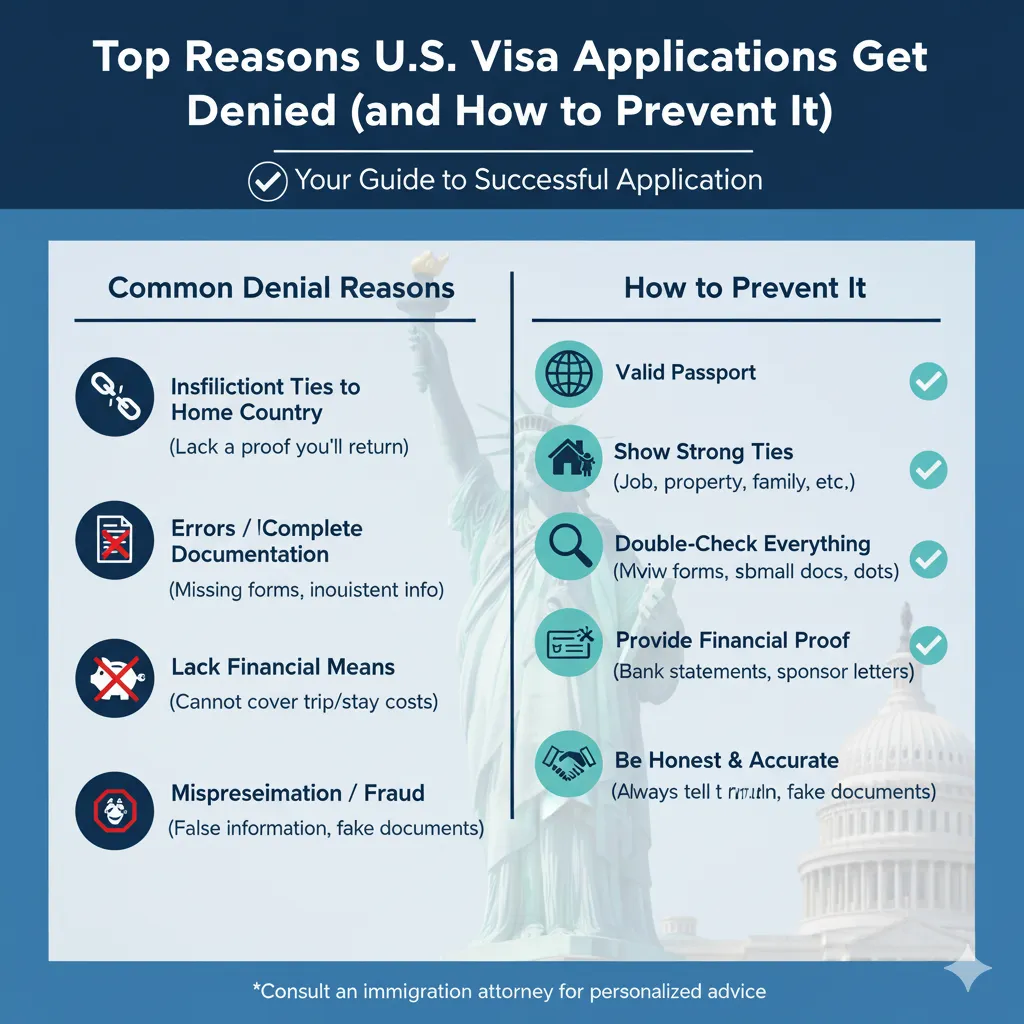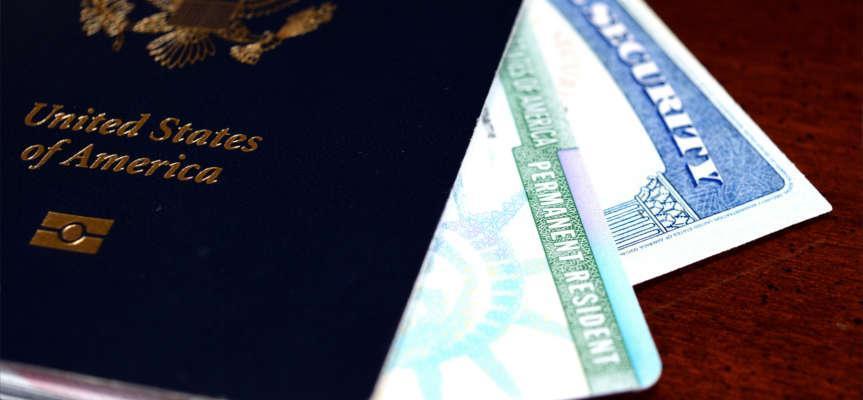How to Apply for a Green Card in 2025: Your Complete Checklist
Obtaining a Green Card, officially known as a Lawful Permanent Resident (LPR) Card, is a life-changing goal for millions of people around the world. It grants the holder the right to live and work permanently in the United States and is a crucial step on the path to U.S. citizenship. However, understanding how to apply for a Green Card can be incredibly complex, with multiple pathways and a mountain of paperwork.
This complete checklist breaks down the essential steps, documents, and considerations for the most common Green Card application processes in 2025, helping you navigate your journey with confidence.
Phase 1: Determine Your Eligibility Pathway
Before you can apply, you must have a valid basis for eligibility. You cannot simply apply for a Green Card without being sponsored or qualifying through a specific category. The main pathways are:
- ✅ Family-Based: This is the most common path. You may be eligible if you are the spouse, unmarried child under 21, or parent of a U.S. citizen. Other eligible relatives include married children or siblings of U.S. citizens, and spouses or unmarried children of current Green Card holders.
- ✅ Employment-Based: This path is for individuals with specific job skills. Categories range from “persons of extraordinary ability” (EB-1) to skilled workers, professionals, and other workers (EB-3). Most categories require a job offer and a sponsoring U.S. employer who must complete a labor certification process (PERM).
- ✅ Refugee or Asylee Status: Individuals who have been granted asylum or admitted as a refugee can apply for a Green Card one year after their status was approved.
- ✅ Diversity Visa Lottery: Each year, the U.S. government makes a limited number of Green Cards available to individuals from countries with historically low rates of immigration to the U.S.
- ✅ Other Categories: This includes special immigrant visas for religious workers, victims of crime (U Visa) or trafficking (T Visa), and long-time residents.
Phase 2: The Initial Petition (Proving Your Basis)
Once you’ve identified your pathway, the first official step is for your sponsor to file a petition with U.S. Citizenship and Immigration Services (USCIS).
- ✅ For Family-Based: Your U.S. citizen or LPR relative files Form I-130, Petition for Alien Relative.
- ✅ For Employment-Based: Your U.S. employer filesForm I-140, Immigrant Petition for Alien Worker.
- ✅ For Special Immigrants: This may involve filing Form I-360, Petition for Amerasian, Widow(er), or Special Immigrant.
Key Documents for the Initial Petition:
- Proof of sponsor’s U.S. citizenship or LPR status (e.g., birth certificate, passport, Green Card copy).
- Proof of the qualifying relationship (e.g., marriage certificate for spouses, birth certificates for children/parents).
- For employment cases, evidence of the applicant’s qualifications and the employer’s ability to pay the offered wage.
- Appropriate filing fees.
Phase 3: Wait for Visa Availability (The Priority Date)
After the initial petition is approved, you must wait for an immigrant visa to become available.
- ✅ Immediate Relatives: If you are the spouse, parent, or unmarried child under 21 of a U.S. citizen, there is no wait. You can proceed to the next step immediately.
- ✅ All Other Categories: You will be assigned a “priority date” (the date your petition was filed). You must wait until this date becomes “current” on the Department of State’s monthly Visa Bulletin. This wait can range from a few years to over a decade, depending on your category and country of origin. This is often the longest part of understanding how to apply for a Green Card.
Phase 4: The Final Application (Adjustment of Status vs. Consular Processing)
Once your priority date is current, you can file the final application. Your location determines the process.
- ✅ If You Are Inside the United States (Adjustment of Status):
- File Form I-485, Application to Register Permanent Residence or Adjust Status.
- File Form I-864, Affidavit of Support (for most family-based cases).
- FileForm I-765 for work authorization andForm I-131 for travel permission while your I-485 is pending.
- Undergo a biometrics appointment (fingerprints and photo).
- Attend an interview at a local USCIS office.
- ✅ If You Are Outside the United States (Consular Processing):
- Your case is transferred to the National Visa Center (NVC).
- You will pay fees and submit required documents online via the Consular Electronic Application Center (CEAC).
- Documents include your passport, photos, civil documents (birth/marriage certificates), and the I-864 Affidavit of Support.
- Undergo a medical examination with an approved panel physician.
- Attend an interview at a U.S. embassy or consulate in your home country.
Immigration Law Firm Resources Across the U.S.
The process is detailed and unforgiving of errors. Seeking legal help is highly recommended.
- Washington D.C.: Maggio Kattar
- Georgia: Kuck Baxter Immigration LLC (Atlanta)
- Minnesota: Wilson Law Group (Minneapolis)
- Oregon: Quan Law Group (Portland)
- Arizona: The American Immigration Law Offices of Phoenix (Phoenix)
- National: The American Immigration Lawyers Association (AILA) provides a national directory to find qualified attorneys.
Conclusion: A Journey Requiring Precision
Knowing how to apply for a Green Card is a multi-stage journey that demands patience, meticulous organization, and a thorough understanding of the law. Each step, from proving eligibility to passing the final interview, has specific requirements that must be met perfectly. Using this checklist can help you stay organized, but because of the high stakes and potential for life-altering delays or denials, working with an experienced immigration attorney is the best way to ensure your application is strong, complete, and correctly filed.
Sources:
- U.S. Citizenship and Immigration Services (USCIS). (2025). Green Card Eligibility Categories & Application Forms. Retrieved from uscis.gov.
- U.S. Department of State – Bureau of Consular Affairs. (2025). Immigrant Visa Process. Retrieved from travel.state.gov.
- Nolo. (2025). How to Get a Green Card.




